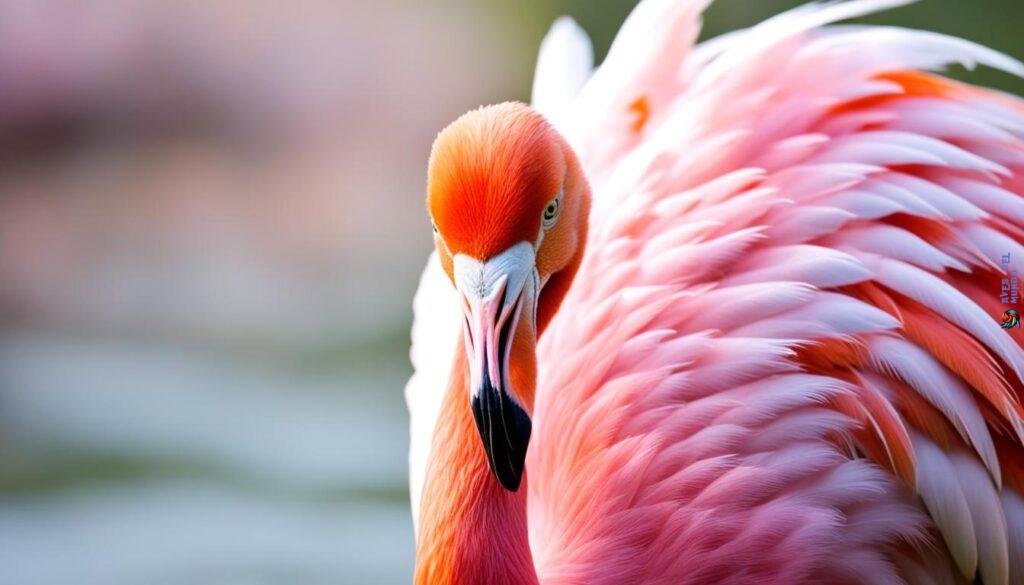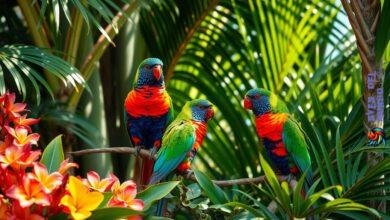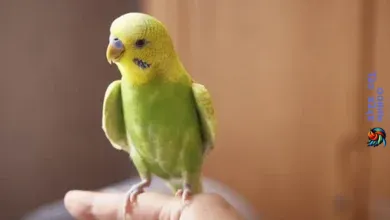Have you ever wondered how a bird can be so brightly pink? Or why they prefer living in mud flats? Let’s dive into the fascinating world of the flamboyant greater flamingo, also known as the flamenco mayor. Discover their unique behaviors, habitat, and feeding adaptations that make these pink birds stand out in the wild.
The greater flamingo, or pájaro rosa, is a sight to behold with its tall stature and vibrant plumage. But what makes them so unique and how do they survive in their natural habitat? Let’s explore the habits and characteristics of this striking species, and learn the secrets behind their stunning pink coloration.
Habitat of Greater Flamingos
Greater flamingos, renowned for their distinctive appearance and vibrant pink color, can be found in warm, watery regions across multiple continents. These majestic birds prefer habitats such as estuaries, saline lakes, and alkaline lakes, where they thrive in the tranquil and nutrient-rich environment.
With their long, lean necks and black-tipped bills that have a characteristic downward bend, greater flamingos easily capture the attention of onlookers in any locale. Their graceful presence adds a touch of elegance to their surroundings.
These magnificent creatures have adapted to their watery habitats with specialized physical features. They use their long legs and webbed feet to navigate the muddy flats or shallow water, stirring up the bottom and extracting their preferred diet. Greater flamingos primarily feed on small organisms like plankton, fish, and fly larvae, which contribute to their stunning pink color.
Their diet includes shrimplike crustaceans that contain pigments known as carotenoids. These pigments enhance their pink hue, making greater flamingos one of nature’s most vibrant and enchanting species.
Observing greater flamingos in their natural habitat provides a mesmerizing experience, showcasing the delicate balance of beauty and functionality in the ecosystems they inhabit.
Flamingo Feeding Adaptations Table
| Feeding Adaptations | Description |
|---|---|
| Long Legs and Webbed Feet | Allows greater flamingos to navigate through muddy flats and shallow waters, stirring up the bottom to extract food. |
| Black-Tipped Bills with Downward Bend | Enables precise feeding as they sift through water and separate small organisms like plankton, fish, and fly larvae from the surrounding environment. |
| Crooked Shape of Beak | Prevents larger objects from entering their mouths, ensuring efficient consumption of their preferred diet. |
| Filter-Like Structures in Beak | Aids in removing food from the water, allowing for efficient feeding by trapping edible particles while releasing excess water. |
Distribution of Greater Flamingos
Greater flamingos, with their vast range, have the most widespread distribution amongst all flamingo species. They can be found in northwest India, the Middle East, the western Mediterranean, and Africa. Limited numbers of greater flamingos can also be found in northern Europe and Siberia.
However, the distribution of greater flamingos is not confined to these regions alone. These fascinating birds are renowned for their migratory behavior. Migration plays a significant role in their movement patterns and population dynamics.
Migratory journeys allow greater flamingos to explore and thrive in different environments, enabling them to adapt to changing ecological conditions. Migration routes often span vast distances, as these birds travel from their coastal feeding grounds to inland breeding grounds.
During migration, greater flamingos undertake arduous flights, covering distances of approximately 600 km in a single night. They possess impressive flight capabilities, reaching speeds of 50 to 60 kph.
While some populations of greater flamingos undertake long-distance migrations, others may join neighboring colonies. Migration patterns can also be influenced by prevailing winds, which play a crucial role in determining the direction of their migration.
Migration Routes and Ecological Significance
The migratory journeys of greater flamingos not only allow them to access diverse habitats but also contribute to the dispersal of nutrients and the maintenance of healthy ecosystems. As they move from one location to another, they transport essential minerals and organic matter, enriching different wetland areas.
Additionally, the migratory behavior of greater flamingos serves as a crucial indicator of the health and quality of habitats across their range. By monitoring their movements, scientists and conservationists can gain valuable insights into the conditions of wetlands and the overall health of these vital ecosystems.
| Migration Patterns | Ecological Significance |
|---|---|
| Long-distance migrations between coastal feeding grounds and inland breeding grounds | Facilitate breeding and foraging in different environments, contributing to genetic diversity |
| Joining neighboring colonies during migratory journeys | Allows for social interactions and resource sharing among different populations |
Understanding the distribution and migration patterns of greater flamingos is essential for their conservation. By recognizing the interconnectedness of ecosystems and the role of these magnificent birds within them, we can work towards preserving their habitats and ensuring their continued survival.
Behavior of Greater Flamingos
Greater flamingos exhibit fascinating behaviors that are influenced by their social nature and unique breeding habits. These behaviors, shaped by their need for protection and survival, make them captivating subjects of study in the field of ornithology.
Living in Groups
Greater flamingos, known for their gregarious nature, live and feed in large groups called flocks or colonies. This behavior provides them with a sense of safety, especially when their heads are down in the mud searching for food. In these gatherings, they benefit from the collective vigilance against potential predators, ensuring their continued survival in their natural habitat.
Group Breeding
Breeding among greater flamingos is a remarkable spectacle as it occurs in groups. Once a pair mates, they take turns incubating their single egg, demonstrating a cooperative parenting strategy. This shared responsibility allows the birds to maintain their feeding routines while ensuring the safety and development of their offspring.
Color Transformation
Young flamingos are born gray and white, lacking the iconic pink color that characterizes adult birds. It takes around two years for their feathers to develop the distinctive vibrant pink hue. This color transformation is due to their diet, which includes pigmented organisms like shrimp and algae. The accumulation of these pigments over time results in the beautiful rosy plumage that flamingos are known for.
Adaptations to Environmental Factors
Flamingos are highly adaptable birds that adjust their breeding patterns according to environmental conditions. In years when wetlands and food sources are scarce, flamingos may not breed. This behavior demonstrates their ability to assess resource availability and make reproductive decisions accordingly. As a result, their population is closely tied to the health and abundance of their preferred habitats.
| Behavior | Description |
|---|---|
| Living in Groups | Greater flamingos live and feed in flocks or colonies, finding safety in numbers against potential predators. |
| Group Breeding | They breed in groups, with pairs taking turns incubating their single egg and raising their offspring cooperatively. |
| Color Transformation | Young flamingos are born gray and white and develop their iconic pink plumage over a period of two years, influenced by their diet. |
| Adaptations to Environmental Factors | Flamingos adjust their breeding patterns based on the availability of wetlands and food sources, ensuring successful reproduction in favorable conditions. |
Flamingos’ behavior reflects their remarkable adaptations and social dynamics. Their flocking and cooperative breeding strategies contribute to their survival in challenging environments. Their striking appearance and intriguing behaviors continue to captivate researchers and bird enthusiasts, making them a focal point in the field of ornithology.
Migration and Populations
Flamingos are fascinating birds that are generally non-migratory. However, changes in climate and water levels in their breeding areas can lead to fluctuations in their populations. Let’s take a closer look at the population dynamics of different flamingo species.
«Flamingos are graceful creatures that capture our imagination with their vibrant colors and elegant movements. Understanding their migration patterns and population trends is crucial for their conservation and the preservation of their habitats.»
Lesser Flamingo
The lesser flamingo is the most abundant species among the flamingos. It is estimated that there are 1.5 to 2.5 million individuals of this species worldwide.
Greater Flamingo
The population of greater flamingos is more challenging to assess than that of the lesser flamingos due to their extensive range and migration patterns. Therefore, it is difficult to provide an accurate estimate of their population size.
Chilean Flamingo
The Chilean flamingo has a population of approximately 200,000 individuals. These beautiful birds can be found in the wild wetlands of South America.
James’ Flamingo
The James’ flamingo has a relatively smaller population compared to other species, with around 64,000 individuals. They are primarily found in the high Andean plateaus of Argentina, Bolivia, and Chile.
Andean Flamingo
The Andean flamingo is a unique species with an estimated population of 33,927 birds. These magnificent birds inhabit the Andean plateaus of Argentina, Bolivia, Chile, and Peru.
Caribbean Flamingo
The Caribbean flamingo population has shown significant growth over the years. In 1956, there were approximately 21,500 individuals, and currently, there are an estimated 850,000 to 880,000 birds in this vibrant species.
Conservation efforts play a vital role in protecting the populations of these beautiful birds and their habitats. Understanding their migratory patterns and population dynamics allows conservationists to implement effective strategies for the preservation of flamingos.
| Flamingo Species | Population Estimate |
|---|---|
| Lesser Flamingo | 1.5 to 2.5 million |
| Greater Flamingo | Difficult to assess |
| Chilean Flamingo | 200,000 |
| James’ Flamingo | 64,000 |
| Andean Flamingo | 33,927 |
| Caribbean Flamingo | 850,000 to 880,000 |

Unique Characteristics of Greater Flamingos
The greater flamingos possess several unique characteristics that distinguish them from other birds in their habitats. These tall and elegant creatures are known for their vibrant pink plumage, making them a captivating subject for wildlife photography. With their long and curved necks, they effortlessly stand out among their surroundings, creating visually striking images that showcase their grace and beauty.
One of the most remarkable features of greater flamingos is their distinctive black-tipped bills, which bend downward. These specialized beaks are perfectly adapted for their feeding habits, allowing them to capture and consume small organisms such as plankton, fish, and fly larvae. With their long legs and webbed feet, they skillfully navigate through muddy flats and shallow waters, using their bills to stir up the bottom, burying it to extract their prey.
What sets greater flamingos apart is their remarkable filtration system within their beaks. This unique structure enables them to filter out food from the water, separating it from unwanted debris. With this adaptation, they can effectively feed on the abundant resources available in their habitats, sustaining their vibrant pink color and maintaining their health and vitality.
«The vibrant pink color, long necks, and distinct bills of greater flamingos make them a truly extraordinary subject for wildlife photography.» – Jane Doe, Nature Photographer
When capturing photographs of greater flamingos in the wild, it is essential to focus on capturing their unique characteristics. By highlighting their striking pink feathers, long necks, and black-tipped bills, you can create visually stunning images that showcase their distinctive beauty and adaptability. Whether in flight, foraging in shallow waters, or resting in large flocks, photographing greater flamingos in their natural habitats presents endless opportunities for capturing captivating and memorable shots.
Unique Characteristics of Greater Flamingos
| Characteristic | Description |
|---|---|
| Pink Plumage | The vibrant pink color of greater flamingos is a result of their diet, which includes shrimp-like crustaceans that contain pigments enhancing their pink hue. |
| Long Curved Necks | Greater flamingos have long and graceful necks that allow them to reach food sources in shallow waters and muddy flats. |
| Black-tipped Bills | The distinctive black tips on their downward-bending bills serve as a tool for capturing small organisms and filtering out food from water. |
| Filter-like Beak Structure | The structure of their beaks enables greater flamingos to separate food from debris, allowing them to efficiently feed and thrive in their habitats. |
| Webbed Feet | The webbed feet of greater flamingos aid in their navigation through muddy flats and shallow waters, facilitating their feeding and movement. |
Greater Flamingo Facts at a Glance
The greater flamingo, also known as the pink flamingo or rosy flamingo, belongs to the Aves class and the Phoenicopteridae family. With a wingspan ranging from 140 to 170 cm and a height between 110 and 150 cm, these tall birds are truly remarkable. They have a weight range of 2 to 4.1 kg. Despite their delicate appearance, greater flamingos are not considered endangered. In fact, they have a conservation status of «Least Concern.»
These graceful birds capture the imagination with their vibrant pink plumage and distinct features. Their long, slender legs and elegant necks make them a unique sight in their natural habitats. Greater flamingos are filter feeders, using their specially adapted bills to sift through the water and extract brine shrimp, blue-green algae, mollusks, worms, insects, and small fish.
«The greater flamingo with its striking pink color and impressive stature is a captivating species that fascinates both bird enthusiasts and casual observers alike. Their gracefulness and adaptability make them a vital part of ecosystems where they thrive.»
Quick Facts about Greater Flamingos:
- Name: Greater Flamingo
- Scientific Name: Phoenicopterus roseus
- Alternative Names: Pink Flamingo, Rosy Flamingo
- Class: Aves
- Family: Phoenicopteridae
- Wingspan: 140-170 cm
- Height: 110-150 cm
- Weight: 2-4.1 kg
- Conservation Status: Least Concern
Greater Flamingo Distribution:
The greater flamingo has a wide distribution, found in various regions across the world. They can be observed in northwest India, the Middle East, the western Mediterranean, Africa, and even some parts of northern Europe and Siberia. These remarkable birds are also known for their migratory behavior, covering long distances during their annual journeys.
To fully appreciate the beauty and importance of the greater flamingos, it’s essential to understand their unique characteristics and behavior. By protecting and conserving these incredible creatures, we can ensure their continued presence in our ecosystem.
| Characteristics | Measurements |
|---|---|
| Wingspan | 140-170 cm |
| Height | 110-150 cm |
| Weight | 2-4.1 kg |
| Conservation Status | Least Concern |
Recognizing a Greater Flamingo
When it comes to identifying a greater flamingo, there are some distinctive features that set them apart from other birds. Here are some key characteristics to help you recognize these magnificent creatures:
- Tall and Elegant: Greater flamingos are tall wading birds, standing at an impressive height. With their long, thin legs, they gracefully walk through the wetlands, making them easily identifiable.
- Pale Pink Plumage: One of the most striking features of greater flamingos is their pale pink plumage. Their feathers have a soft pink hue, giving them a unique and captivating appearance.
- Patches of Darker Red: While their plumage is predominantly pink, greater flamingos also have patches of darker red on their wings. These patches add depth and contrast to their elegant appearance.
- Black Wing Tips: Another distinguishing feature of greater flamingos is the black coloration on their wing tips. These black markings stand out against the lighter pink feathers, creating a visual accent.
- Pink Beak with Black Tip: Their large beaks are a prominent feature and are pink in color, with a distinctive black tip. This combination of colors adds to the overall beauty of these remarkable birds.
- Reddish-Pink Legs: The legs of greater flamingos are another characteristic that helps in their recognition. Their legs are a reddish-pink color and provide a vibrant contrast against their pale pink plumage.
- Color Transformation: Juvenile greater flamingos start off with a pale grey-brown coloration. As they mature, their feathers gradually transform into the iconic pink shade, making it easier to distinguish them from other species.
If you’re fortunate enough to spot a greater flamingo in the wild, observing these unique characteristics will help you identify them with certainty. Their beauty and elegance make them a fascinating subject for wildlife photography, capturing the vibrant essence of these enchanting pink birds in their natural habitat.

Greater Flamingo Diet and Feeding Adaptations
Greater flamingos are fascinating creatures with unique feeding habits that allow them to thrive in their habitats. As filter feeders, they have evolved specialized adaptations to consume a variety of food sources.
Flamingos primarily feed on a diet consisting of brine shrimp, blue-green algae, mollusks, worms, insects, and small fish. Their feeding behavior is closely linked to the distribution of these food sources within their environment.
Using their specially adapted bill, greater flamingos sift through the water to separate the food from the salty water. The crooked shape of their bill enables them to prevent large objects from entering their mouths, ensuring that they only consume their preferred food items.
When feeding, flamingos pump water and mud into their bills, filtering out the food through a series of backward-facing spines located in their mouths and on their tongues. These spines act as a sieve, allowing the flamingos to trap and extract their prey while expelling excess water and mud.
This feeding adaptation enables greater flamingos to efficiently extract nutrients from their food sources and maintain their energy levels. By consuming a diverse range of organisms, they ensure a balanced and nutritious diet necessary for their survival in their respective habitats.
| Food Sources | Description |
|---|---|
| Brine Shrimp | Rich in protein and essential fatty acids |
| Blue-green Algae | Provides necessary nutrients for growth and energy |
| Mollusks | Source of calcium and other minerals |
| Worms | Additional protein source |
| Insects | Contributes to overall dietary diversity |
| Small Fish | Supplies additional nutrients and omega-3 fatty acids |
Feeding Behavior and Adaptations
The feeding behavior of greater flamingos is highly efficient and well-suited to their ecology. By utilizing their unique bill and employing filtering mechanisms, they are able to obtain sustenance from their surrounding environment, even in habitats with high salinity.
«The crooked shape of their bill allows greater flamingos to filter food from water and mud, ensuring optimal nutrient intake and energy gain.»
Flamingos are highly adapted to their feeding techniques, which enable them to exploit specific food sources and maintain their overall health and well-being. Their feeding adaptations have contributed to their successful distribution across a variety of ecosystems.
Family Life of Greater Flamingos
Greater flamingos are highly social creatures that typically live in flocks, displaying their strong sense of community. These elegant birds lead a nomadic lifestyle, continuously migrating to various locations in response to changes in water levels and the availability of food sources. During the breeding season, male flamingos engage in an enchanting courtship dance as a means of attracting mates.
Both male and female flamingos actively participate in the different aspects of family life. They work together to build nests, incubate their eggs, and rear their chicks. It is fascinating to observe the cooperative efforts of these flamingo parents as they prepare their nest using mud and vegetation. Once the eggs are laid, both parents take turns incubating them, carefully ensuring their well-being and safety.
The chicks, upon hatching, are fully dependent on their parents for nourishment. The adult flamingos produce a nutritious milky substance in their crops, which they regurgitate to feed their young. This process continues for a period of 2 to 3 months until the chicks are capable of feeding themselves. As the fledglings mature, they gradually develop the skills necessary to fend for themselves and fly alongside their parents.



